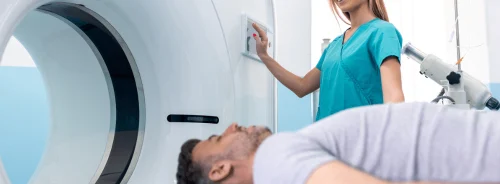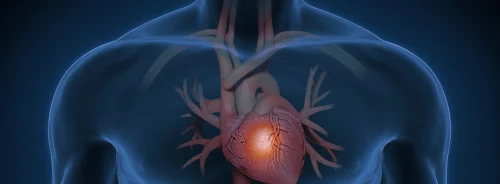Breast cancer is one of the most prevalent cancers among women worldwide and a leading cause of cancer-related deaths. Among the key factors influencing the prognosis and treatment planning for patients with locally advanced breast cancer (LABC) is the presence of axillary lymph node metastases (ALNMs). Accurate detection of ALNMs is crucial as it directly impacts treatment strategies, including the decision to initiate neoadjuvant chemotherapy and whether to perform sentinel lymph node biopsy (SLNB) or axillary lymph node dissection (ALND). While traditional imaging methods such as ultrasound (US) and MRI are used to detect ALNMs, they often yield suboptimal results due to limitations in sensitivity and specificity. Recent advances in radiomic analysis using 3D CT imaging have shown promising results in improving the detection of ALNMs. A recent publication in the Journal of Breast Imaging discusses the findings of a study that compares 3D CT radiomic analysis with conventional imaging features, demonstrating how radiomics could revolutionise ALNM detection and enhance breast cancer treatment.
Radiomics vs Conventional Imaging for ALNM Detection
Conventional imaging modalities, including US and MRI, are widely used to assess axillary lymph nodes in breast cancer patients. US is often the first-line imaging tool due to its availability and cost-effectiveness, but its sensitivity ranges widely from 26% to 87%, depending on the patient and the operator's skill. Although more sensitive, MRI is not routinely used for axillary evaluation due to its higher cost and limitations in visualising the axilla due to fat suppression inconsistencies. Similarly, CT scans are commonly employed to assess distant metastases in LABC patients, but their use for detecting ALNMs has been limited due to poor sensitivity ranging from 50% to 85%.
Radiomics offers a new frontier in imaging by extracting quantitative data from medical images, enabling the detection of features that are invisible to the human eye. Radiomic analysis can capture first-order features such as mean density and energy, which reflect the magnitude of voxel density within the lymph nodes, as well as higher-order features that consider the spatial relationships of these values. A recent study investigated the application of radiomic analysis to 3D segmented CT images and compared the results to conventional imaging features. The findings revealed that radiomic features, particularly energy, significantly outperformed conventional imaging features in detecting ALNMs, with an area under the curve (AUC) of 0.94 compared to 0.89 for the best conventional feature, short-axis diameter.
Key Findings of the 3D CT Radiomics Study
The study focused on 112 patients with biopsy-proven ALNMs, divided into discovery and testing cohorts. A total of 224 lymph nodes were analysed, and 107 radiomic features were extracted from 3D CT images of the lymph nodes. The primary objective was to compare the diagnostic performance of radiomic features against conventional CT features, such as lymph node size and cortical thickness. Among the radiomic features, energy—a measure of voxel density magnitude—demonstrated the highest sensitivity, specificity, and accuracy in detecting ALNMs. In the discovery cohort, energy achieved a sensitivity of 92%, a specificity of 81%, and an AUC of 0.94, outperforming all conventional features.
The study also explored whether combining multiple radiomic features could improve the detection of ALNMs. However, it was found that combining radiomic features did not provide a statistically significant improvement over using energy alone. The AUC for the combined model was 0.96, compared to 0.94 for energy alone. This finding suggests that energy is a robust indicator of ALNMs and could serve as a single-feature model for ALNM detection, simplifying the implementation of radiomic analysis in clinical settings.
Implications for Clinical Practice and Future Directions
The findings of this study have significant implications for the detection and management of ALNMs in breast cancer patients. One key advantage of 3D CT radiomic analysis is that it can be applied to imaging data already being collected as part of routine care for LABC patients. This approach could enhance ALNM detection without requiring additional imaging or invasive procedures, such as biopsy, for nodes that appear suspicious on US but are challenging to access.
Moreover, radiomic analysis may be particularly beneficial for detecting ALNMs in areas that are challenging to assess using conventional imaging methods, such as interpectoral and internal mammary lymph nodes. By improving the accuracy of ALNM detection, radiomics could guide decisions regarding neoadjuvant chemotherapy and whether to proceed with SLNB or ALND, ensuring that patients receive the most appropriate and effective treatment.
Future research should focus on developing automated segmentation tools to streamline the application of radiomics in clinical practice. The study already demonstrated the feasibility of manual 3D segmentation, but automated methods would improve reproducibility and reduce the time required for analysis. Additionally, incorporating machine learning algorithms could further enhance the predictive power of radiomic features, enabling personalised treatment plans based on the likelihood of nodal metastases.
Conclusion
3D CT radiomic analysis offers a promising new approach to the detection of ALNMs in breast cancer patients. By utilising quantitative imaging data not discernible by conventional methods, radiomics can provide a more accurate and non-invasive means of detecting lymph node metastases. The study demonstrated that the radiomic feature energy significantly outperformed traditional imaging features in detecting ALNMs, potentially improving staging and treatment planning for breast cancer patients. As radiomics continues to evolve, it holds the potential to become an integral part of clinical practice, leading to more precise diagnoses and personalised care for breast cancer patients.
Source Credit : Journal of Breast Imaging
Image Credit: iStock
References:
Barszczyk M, Singh N, Alikhassi A (2024) 3D CT Radiomic Analysis Improves Detection of Axillary Lymph Node Metastases Compared to Conventional Features in Patients With Locally Advanced Breast Cancer. Journal of Breast Imaging. 6(4):397-406






